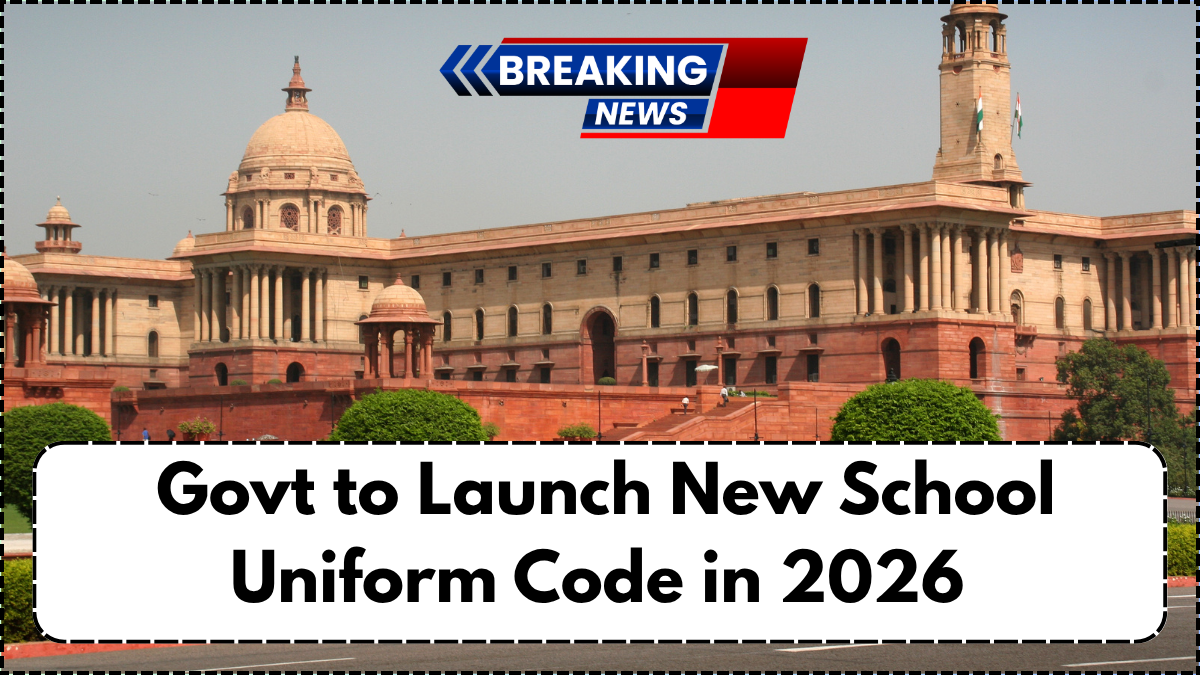Starting January 2026, India’s Ministry of Education is implementing a nationwide overhaul of the school dress code India 2026, aiming to unify and modernize uniforms in all government schools. Announced in mid-July 2025, the policy is being introduced to promote equality, national identity, and ease of enforcement across state-run institutions.
Unlike previous fragmented dress policies that varied by region, the new uniform code for govt schools from January 2026 will set a standard across the country, while still allowing for limited regional customization. This bold move is being seen as a strategic push towards greater coherence in public education policy.

What’s Different in the New Uniform Policy?
The new guidelines bring significant changes in both design and philosophy. Here’s a breakdown of what’s new:
| Feature | Current Policy | New Policy from January 2026 |
|---|---|---|
| Gender Uniformity | Varied across states | Unisex options introduced |
| Seasonal Adjustments | Often overlooked | Climate-specific fabrics included |
| Color Scheme | State-chosen colors | Nationally harmonized color palette |
| Sustainable Materials | Rarely mandated | Mandatory eco-friendly fabrics |
| Inclusive Sizing | Inconsistent sizing norms | Standardized, inclusive sizing chart |
A standout feature of the uniform policy change is the mandatory inclusion of breathable and eco-conscious fabrics, designed to enhance student comfort and reduce environmental impact. Additionally, uniforms will now incorporate elements suited to India’s diverse climates—lighter fabrics in southern and coastal regions and more insulating material for northern states.
Emphasis on Inclusivity and Comfort
The new dress code also introduces gender-neutral options—a move that’s being widely praised by educators and social advocates. This means students can choose from multiple approved uniform formats regardless of gender, which is a significant shift from rigid dress norms in many regions.
Inclusion is also addressed through an improved sizing system that takes into account body diversity among growing children and adolescents. The Ministry has worked closely with textile experts and child development psychologists to ensure that comfort and mobility are prioritized without compromising discipline or appearance.
Implementation Timeline and State-Level Role
Rollout will begin in phases from January 2026, with the central government working closely with state education departments. While the framework is nationally mandated, states will be given limited autonomy to adapt elements like logos, cultural motifs, or traditional patterns relevant to the region.
Pilot programs are currently underway in selected districts of Maharashtra, Tamil Nadu, and Assam, with feedback from these test runs being used to refine final guidelines. A centralized procurement portal will also be launched in September 2025 to facilitate affordable access to approved uniform sets.
How Schools and Parents Should Prepare
Schools have been asked to start awareness campaigns from August 2025. Parent-teacher associations (PTAs) are expected to play a key role in bridging the communication gap and assisting in distribution. Uniform vendors are also being brought into the fold early to avoid shortages or pricing anomalies.
Government assistance will be extended to students from low-income families to ensure no one is left behind during the transition. The Ministry is also planning a reimbursement scheme tied to Aadhaar to ensure transparent and efficient disbursal of uniform-related benefits.
Conclusion
The new uniform code for govt schools from January 2026 marks a progressive step in aligning India’s public education with inclusivity, sustainability, and national coherence. As preparations pick up pace in the latter half of 2025, the focus remains on smooth execution and widespread awareness. With thoughtful planning and stakeholder involvement, this uniform policy change could set a strong precedent for future educational reforms.
FAQs
What is the biggest change in the new school dress code India 2026?
The biggest change is the introduction of gender-neutral uniform options and standardized eco-friendly fabrics suitable for India’s climate diversity.
Will private schools be affected by this uniform policy change?
No, the policy applies only to government schools. However, private institutions may voluntarily align with the new standards.
Are regional cultural elements allowed in the new uniform?
Yes, while the overall design is standardized, states can incorporate limited regional motifs and cultural patterns.
How will the government ensure affordability of the new uniforms?
Through bulk procurement and a centralized portal, along with subsidy schemes for economically weaker students.
When will parents start seeing the new uniforms in stores?
Uniforms are expected to be available from November 2025 onwards, in preparation for the January 2026 rollout.
Click here to know more.